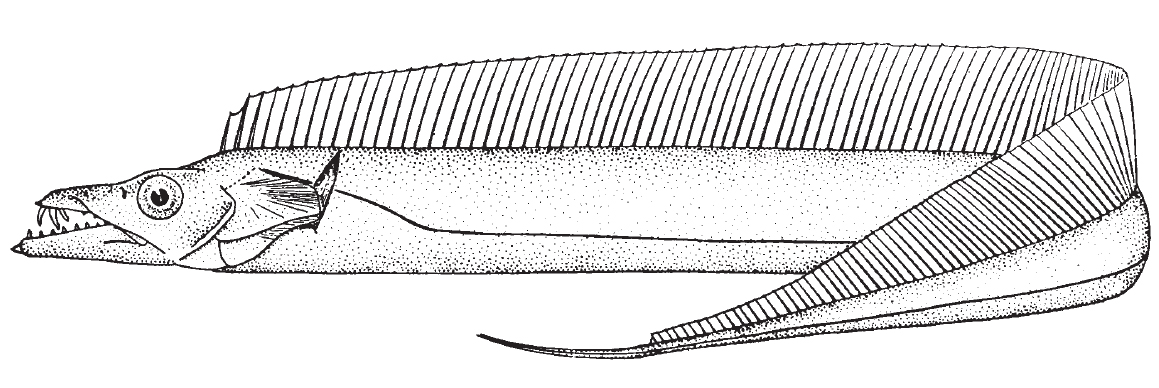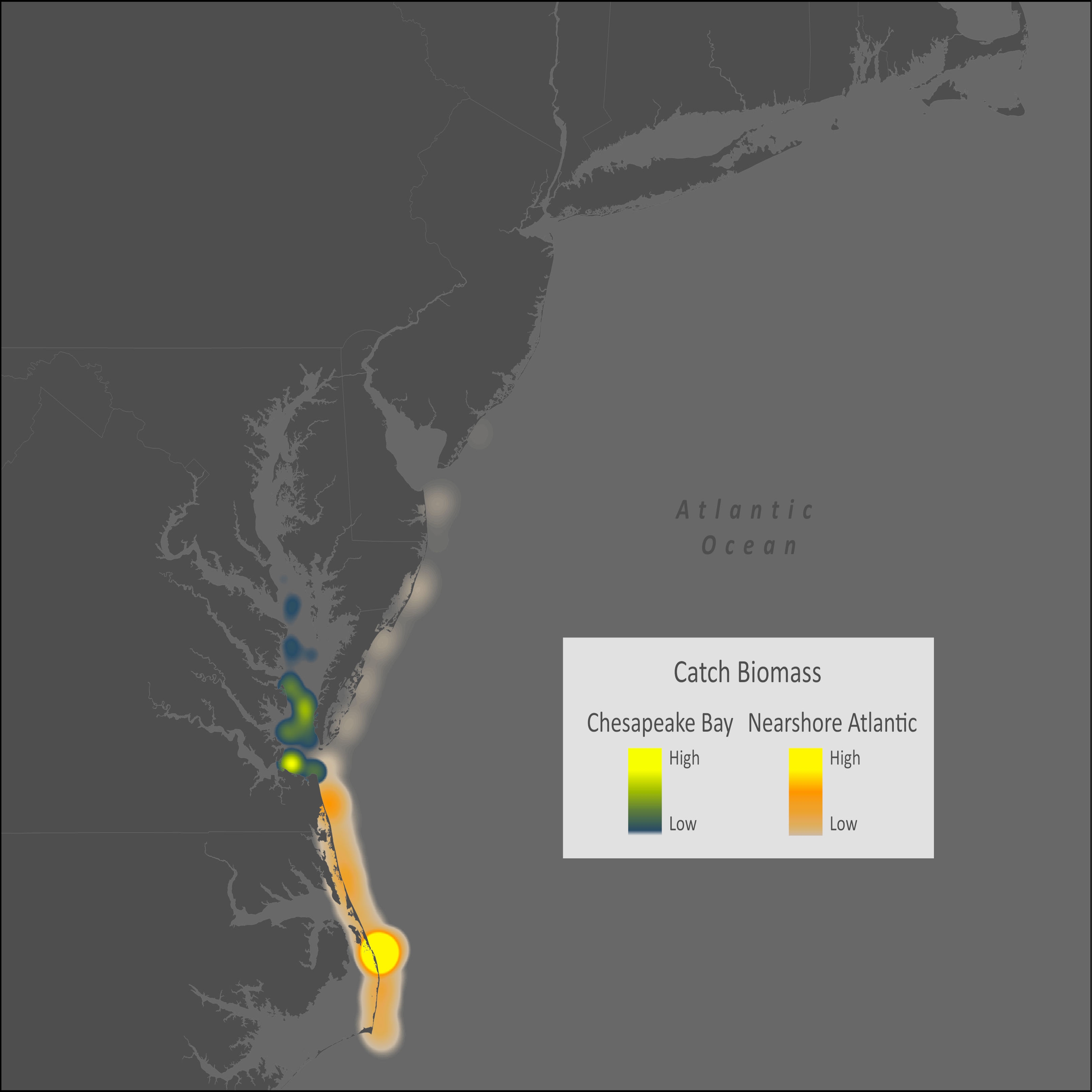Atlantic cutlassfish - Trichiurus lepturus
*Information from FAO Species Identification Guide Western Central Atlantic*

Size
Maximum 1.2 m total length, common 50 to 100 cm.
|
Diagnostic characters:
Body elongate and strongly compressed, ribbon-like, tapering to a point (tip often broken). Depth about 15 to 18 in total length. Head about 6 to 8 in total length, with upper profile slightly concave, gently rising from snout to dorsal-fin origin. Interorbital space and nape convex, with sagittal crest elevated. Eye 5 to 7 in head, nearly touching upper profile. Dorsal fin moderately high, very long, with 3 spines and 130 to 135 rays, not divided by notch. Anal fin reduced to about 100 to 105 minute spinules, usually embedded in skin or slightly breaking through.No caudal fin.Pectoral fins directed upward, with 1 spine and 11 to 13 rays. Pelvic fins absent. Colour: fresh specimens steel blue with silvery reflection, pectoral fins semitransparent, other fins sometimes tinged with pale yellow; the colour becomes uniform silvery grey after death.
|
Habitat, biology, and fisheries
Benthopelagic on continental shelf to 100m depth, usually in shallow coastal waters over muddy bottoms, occasionally at surface at night.Young and immature specimens feed on crustaceans and small fishes; adults more piscivorous. Matures at about 2 years. Eggs pelagic. Commercial species. Caught mainly with bottom trawls and beach seines, also trammel nets, purse seines, and handlines. Marketed fresh, frozen, and salted.
|
Distribution
Throughout tropical and temperate
waters of the world. Moderately abundant in
the Gulf of Mexico and the Caribbean Sea, along
the Atlantic coast extending from northern Virginia
(exceptionally Cape Cod) to northern Argentina.
|



